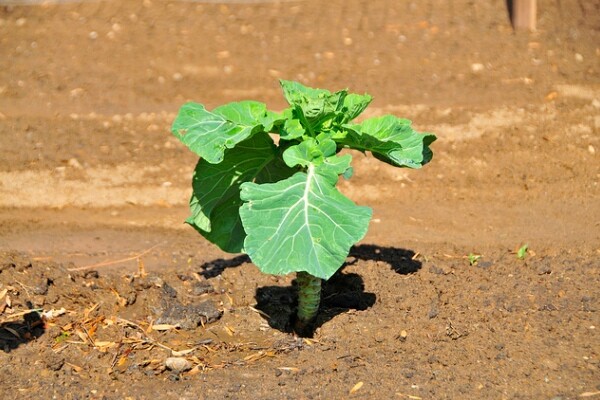Examining California's Urban Farms

Starting a farm isn't as easy as simply throwing seeds in the ground and spraying water on top. Sure, that may fly if you're growing a small tomato plant out back, but if you're trying to get into the business of urban farming, there's a lot to know. And a lot of it's tough to understand. The folks at the University of California Division of Agriculture and Natural Resources are trying to fix this.
Over the past two years, they've been researching the state's urban farms, both by delving through the bureaucratic mess that comes with selling food, as well as in-the-field Q&As with urban farmers themselves to see what hurdles come with the gig. The final result is this handy website which acts as a one-stop shop for any and all urban farmers.
I spoke with UC ANR's Rachel Surls for more information about the project.
What do urban farmers need to get started?
Rachel Surls: Many are beginners. Some were gardeners before they started selling what they're growing, so they don't have a ton of production experience. What they really needed when they first started was a lot of production information, sometimes very basic stuff. Like what to plant, when to plant it, how to irrigate, how to manage pests. Then, after they have been in business a little longer, they start to encounter these challenges they weren't aware of. Like, you mean I'm not zoned for what I'm doing here and what I'm doing is actually illegal? They encounter all kinds of different regulatory and zoning problems they haven't been aware of. And if they stick around long enough, they get to a phase where they need more sophisticated production information, more marketing and business-oriented information, and advice on things like labor. How can I legally use volunteers? What are California labor laws? Just a lot of information that commercial farmers have been dealing with for a long time.
Do California's policies promote urban farming or hinder it?
Rachel: Until recently there wasn't a lot of state level policies that promoted urban farming. But we do see more of that. For example, last fall the Governor signed AD-551, which is the Urban Agriculture Incentive Zone Act. That's a new law that allows private landowners to get a tax break if they lease their land for urban ag. Another example is, one area of confusion for urban farmers, particularly if they're trying to sell to a restaurant, is you have to be what's called an "approved source" per the California retail food code. Trying to figure out how to become an "approved source" is very confusing, it's sort of different for every county, it's this gray area of regulation. But the state is now dealing with that with a new law that clarifies things.
Is land access a problem? Is there not a lot of land out there for farmers to claim?
Rachel: There's plenty. Recently, a study came out that showed the city of Los Angeles has over 8,000 different vacant lots. But finding out how to use it and getting access to it is the challenge. One of the most frustrating things is that a lot of vacant land is owned by municipalities that could be doing a lot more to help local residents find land they can use.
Are cities sitting on it, or do they just now know they have it?
Rachel: It's a little bit of both. How they inventory is not transparent. There's not a list that a resident can easily access to find out what land is available. And then trying to figure out how to use it is not at all transparent. Sometimes, I think there's local elected officials who feel the highest use of that land is to build businesses that will create jobs. And although urban agriculture can sometimes create jobs, it has other community benefits that perhaps aren't entirely valued, like offering healthy food, beautifying the neighborhood. Oftentimes, neighborhoods get a Burger King on a piece of vacant land rather than a community garden.
The report listed the largest urban farm being 1,000 acres big. Where is that?
Rachel: That's in Southern California. It's a three-generation family farm, so in that particular case, that farm was started before the area was even urbanized. Like the farmer said, the city came to us, we didn't go to the city. This particular farm is interesting in that it's multiple plots of land, and altogether it's 1,000 acres. And it's all leased. They don't own any land, they just lease it, oftentimes from developers who do not yet have the use for it, so then it can be farmed for a few years.
Are urban farms getting more high-tech?
Rachel: As we went into this, we were expecting to see more high-tech models of urban agriculture, but we're not yet seeing a lot of them in California. It's more old fashioned farming, outside, in the ground. The high-tech models are not readily available yet and they have higher start-up costs. Then there's the fact that in Southern California we still have plenty of open land, if you can get your hands on it. So the need to intensify into greenhouse production or go up into rooftop greenhouses isn't as pressing just yet.


